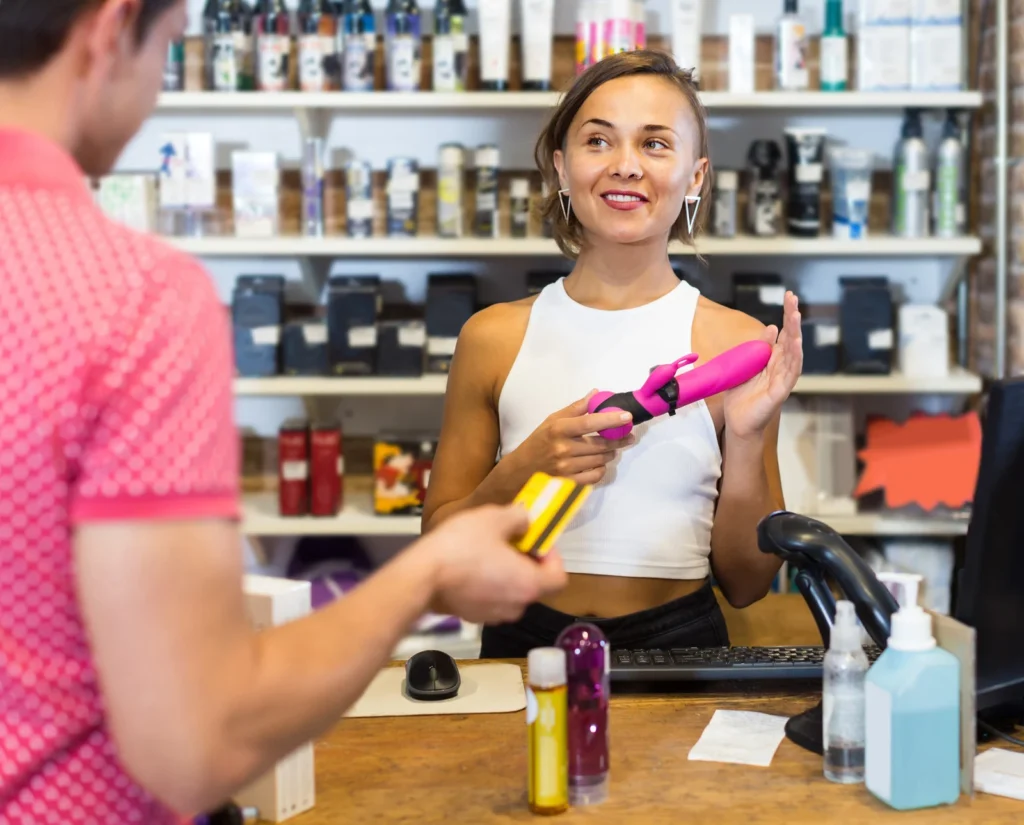
When we think back to the first knots and spanks that marked our BDSM journeys, we realize that the advice that would have helped our younger selves find better and more mind-blowing experiences are exactly the same things we still do today. Here are five tips that helped us navigate BDSM with curiosity and care.
1. Do Research
No matter how far along you are on your kink journey, there’s always something new to learn. It’s important to educate yourself about your interests, limits, and the dynamics you want to explore. Read articles (like the ones on this blog!), listen to podcasts, and dive into books by kink educators. Our list of BDSM resources is a great place to start. Conducting kink research might sound boring or unsexy, but the more you know, the better equipped you’ll be to communicate clearly and play safely.
When Mimsy was first starting out, one of the things she was most interested in was CNC. She didn’t know much at that point, but she did know that this is a risky kink that can go sideways fast if you don’t know what you’re doing. So she did a lot of reading about it before broaching the topic with a partner. This research ultimately paved the way for a smooth experience.
Even kinks that are somewhat mainstream or sound simple to pull off—like breath play or face slapping—are more complicated than they look and deserve some study before attempting them.
2. Take a Class
You can learn a lot about BDSM by reading books and articles, but there’s no substitute for hands-on learning with experienced educators. Whether it’s rope bondage, impact play, negotiation, or aftercare, classes—online or in person—can deepen your knowledge and skills. Many kink communities offer workshops at local dungeons, conferences, or through online platforms. The ticketing site Forbidden Tickets is one place to start. It aggregates numerous kink events from various venues.
Rope bondage in particular is a kink that’s best learned via classes because of how complex it can be. Some of our favorite ties are ones we learned at in-person rope classes. There are also a number of great online tutorials for rope. Skilled BDSM educators (Shay and Stefanos, Rain DeGrey, Midori, etc.) on any topic also imbue their classes with memorable anecdotes, humor, and a level of pizzazz that’s harder to convey in writing.
3. Practice
Like any skill, kink improves with practice. Try new things slowly, and don’t be afraid to rehearse on your own or with a partner before doing a full scene. Practicing helps you hone your skills, understand your implements, and learn how your body or your partner’s body responds. Whether it’s tying knots or practicing flogging on a pillow, this is how you build confidence and competence.
Some skills require more practice than others (such as rope bondage), but doing so doesn’t have to be a heavy lift (or involve another person). For instance, you can practice tying harnesses and single- and double-column ties on yourself while watching TV or on miscellaneous items you have lying around. At one time, Vagabond practiced tying reverse somerville bowlines on nearly every handle in our apartment!
If you’re practicing with a partner, don’t attempt to turn the practice session into a scene. The goal of practicing is to try things out more clinically than you would in a scene and communicate about them in real time. For example, to prepare for CNC, Mimsy practiced slapping Vagabond since this wasn’t something she had prior experience doing to someone else—only receiving. Practicing allowed her to experiment with force and aim and get feedback from Vagabond (too light, wrong spot, etc.). When it came time to slap him during a CNC scene, she felt much more prepared.
4. Make and Nurture Kinky Friendships
Having someone to talk to about kink—without judgment—is invaluable. A kinky friend can help you process experiences, give honest feedback, and swap tips or safety practices. They don’t have to be a play partner—just someone who can speak the language and understand the journey. Kink can be isolating when you’re exploring alone, but one good friend can make it feel a whole lot more grounded and joyful.
It’s especially nice to know other kinky couples. Two of Vagabond’s best friends are a more experienced couple. Hearing their perspectives on their approach to D/s, and especially getting insight from someone on the other side of the slash, made Vagabond a better dom. Reading about what a safeword is was one thing, but hearing a friend explain exactly how it works in their dynamic was more helpful than any book.
If you’re wondering where to make kinky friends, chances are you won’t need to look far. You probably already know at least one kinky person and just don’t realize it. This was the case for Mimsy. All it took was a couple of frank conversations about sex with friends to discover other kinksters hiding in plain sight.
5. Shop for Implements in Person
Online shops are convenient (and private), but nothing beats being able to handle implements in person. When you go to a brick-and-mortar store for kink gear, you get to feel the weight of a paddle, test the texture of a flogger, or feel the fit of a collar. IRL kink shops also often have staff who are knowledgeable and respectful, making it easier to ask questions or get recommendations. Plus, supporting local sex shops helps keep kink-friendly spaces alive.
If you attend BDSM events or dungeons where vendors are present, be on the lookout for interesting gear. Asking about someone’s flogger, restraints, or set of knitting needles is a great conversation starter for making new friends and learning about new toys. Be on your best behavior and you may get to try something out.